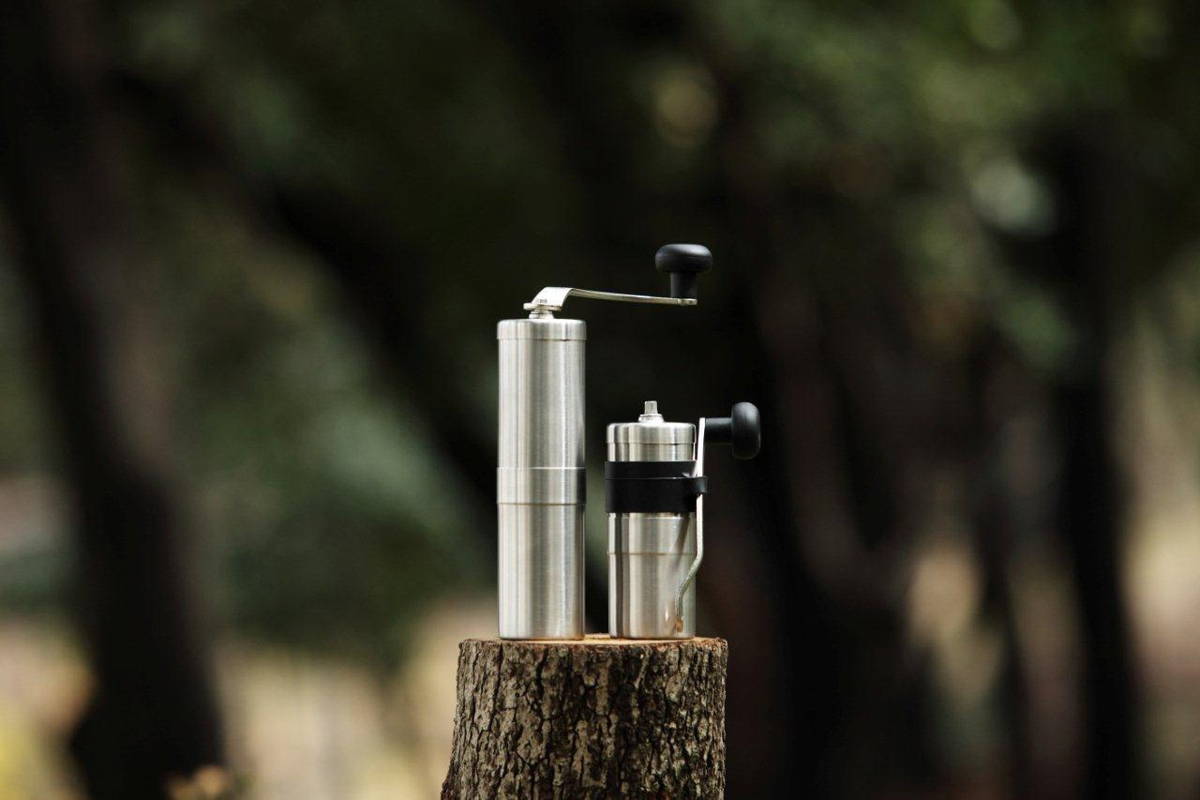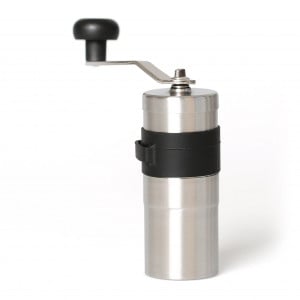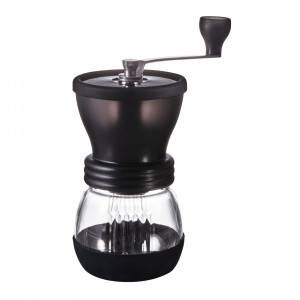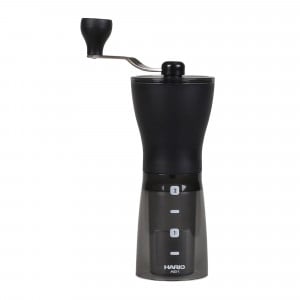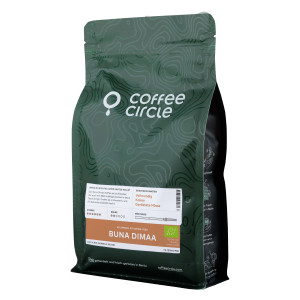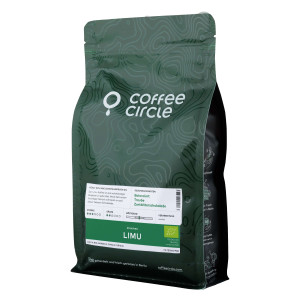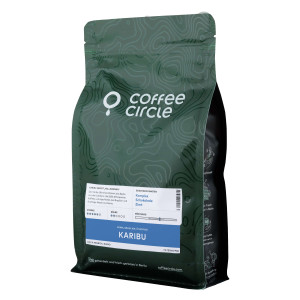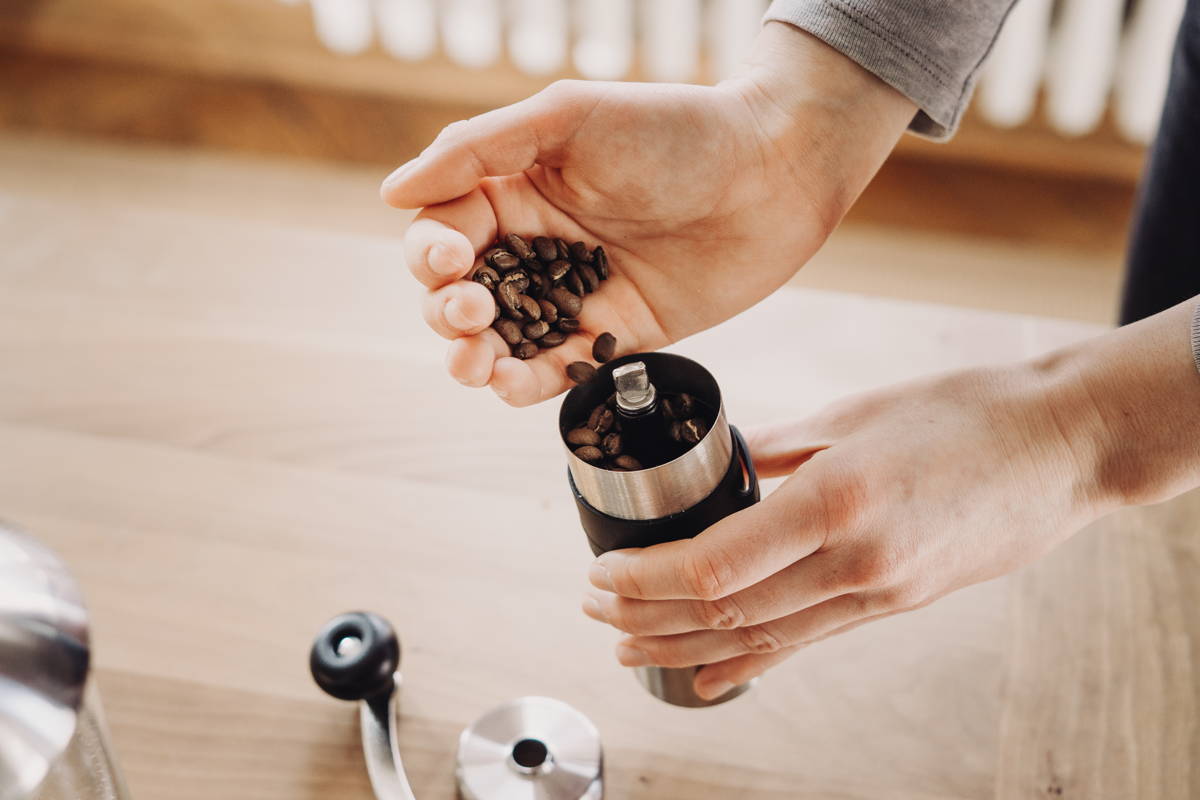
2023 grinder test: 8 manual coffee grinders
The classic hand coffee grinder is much more than just nostalgia. Convenient for on the go and quite capable of keeping up with the grinding results of the electric competition. Are you currently looking for a hand coffee grinder, but can’t decide between the large selection? We have tested 8 grinders for you and reveal our 3 test winners here.
Which grinders did we test?
We tested a total of 8 grinders. However, we only present our three test winners in detail here.
- Hario Mini Slim Plus
- Hario Skerton Plus
- Porlex Mini
- Hario Canister
- Handground
- Zassenhaus Quito
- Comandante C40 MK3
- Rixow
Which categories did we test and compare?
Find out why you can trust us.
- Processing (20%)
- Operation (30%)
- Grind (50%)
- Grinding mill
- Ø and material of grinder
- Grinding degree settings
- Dimensions (incl. handle)
- Grinding speed for 18g coffee
- Design
- Weight
Note: What can I expect from my hand coffee grinder and what not? A sufficient to very good grind for coffee preparation – definitely. However, the Comandante is the only grinder that delivers a suitable grind for espresso. Since the grinder is at least as important for a good espresso as a good espresso machine, you should not start saving here. A hand grinder is not necessarily the best addition to an espresso machine. Go to espresso grinder test ›
In a nutshell: our favorites
Test winner
More or less surprisingly, the Comandante MK3 has become the test winner. The grinder from the southern German manufacturer convinced in every respect. It delivers a grinding result that even makes our Mahlkönig Guatemala look old. The sharp cone grinder made of high-nitrogen stainless steel enables extreme homogeneity across the entire spectrum of approx. 35 grinding degrees, combined with very little fine dust.
Price-performance-winner
The price-performance winner was the Porlex Mini. It operates with a ceramic cone grinder and offers an amazingly homogeneous grinding result for a grinder in its price class. It is well made and consists almost entirely of stainless steel. The small version of the Porlex fits better in the hand than the Porlex Tall due to its rubber ring and smaller size. It is also more suitable as a small travel grinder.
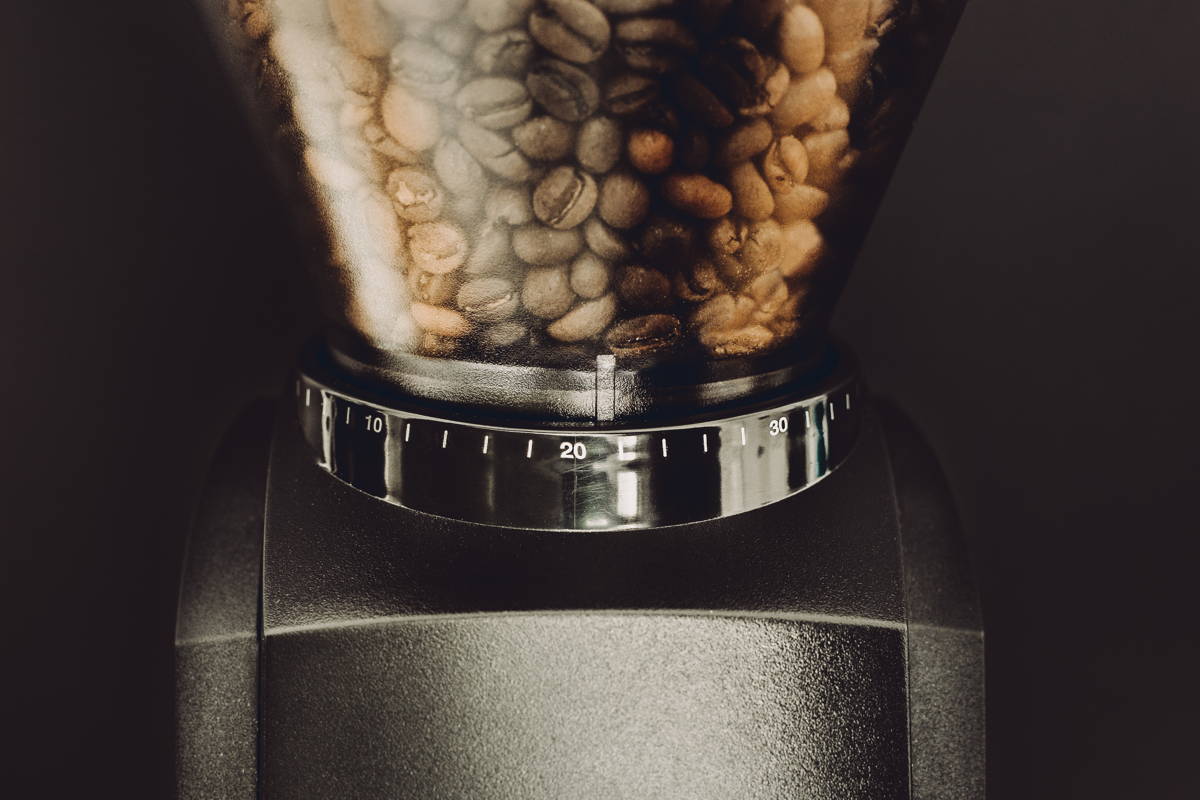
Buying guide coffee grinders: What you should know
Three test winners explained in detail
Test winner: Comandante MK3
Made in Germany and enjoys extreme popularity around the world in the coffee scene: the Comandante MK3. With good reason. It is by far the best hand coffee grinder on the market in many respects and sets completely new standards.
Let’s start by looking at the grinding result. If we look at the size distribution of the coffee particles of our test grinders, we immediately notice the large gap of the grinder of the German manufacturer in homogeneity. It even beats our Mahlkönig Guatemala, a professional electric coffee grinder in this discipline, which we included as a reference value. Its peak is clearly above all others, it almost plays in a league of its own. In addition, it is the only grinder besides the Guatemala that hardly produces any fine dust and also hardly any coarser coffee particles. Especially with medium to coarser grinds, hand coffee grinders usually have problems achieving a consistent grinding result. If the grinder is not really tightly seated, larger pieces will continuously enter the grind container without sufficient grinding.
This grinder can also be very interesting for espresso drinkers, as the typical second peak of the curve is also present in the Comandante. The proportion of „fines“, which prevents the rapid flow during espresso preparation and ensures the characteristic taste and crema, is very pronounced here.
Overall, it can be said that the Comandante is clearly different from all other grinders in terms of the grinding result.
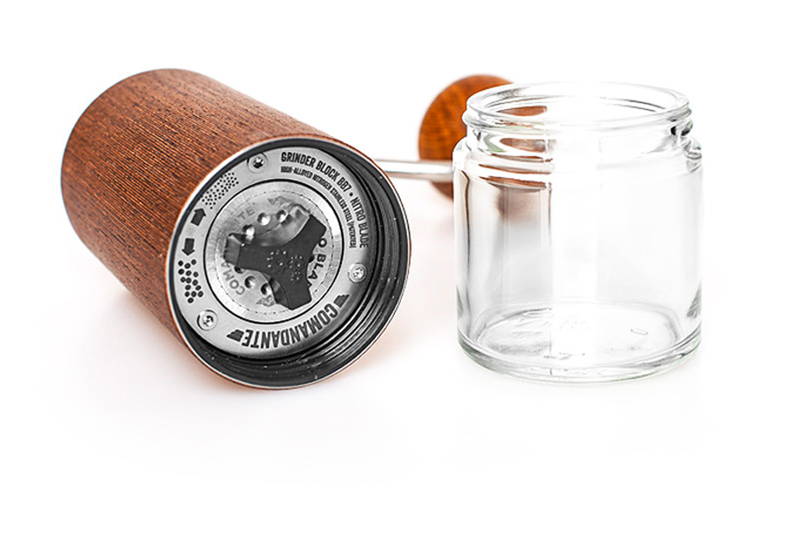
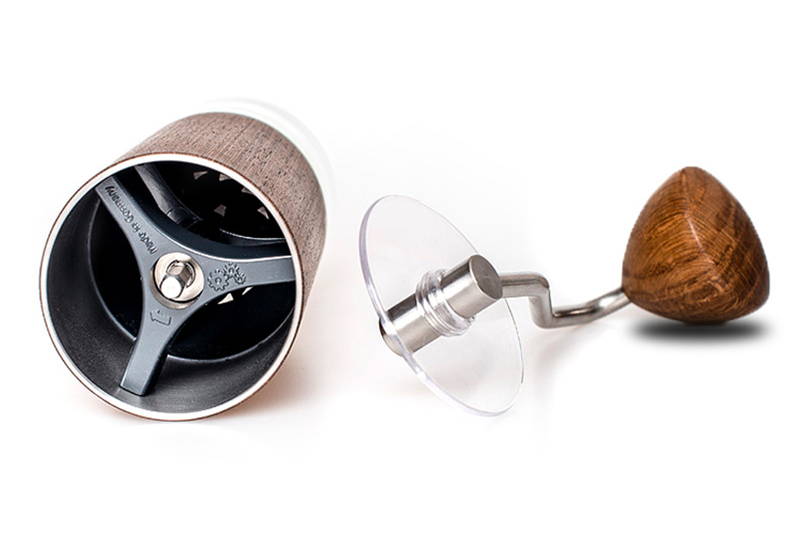
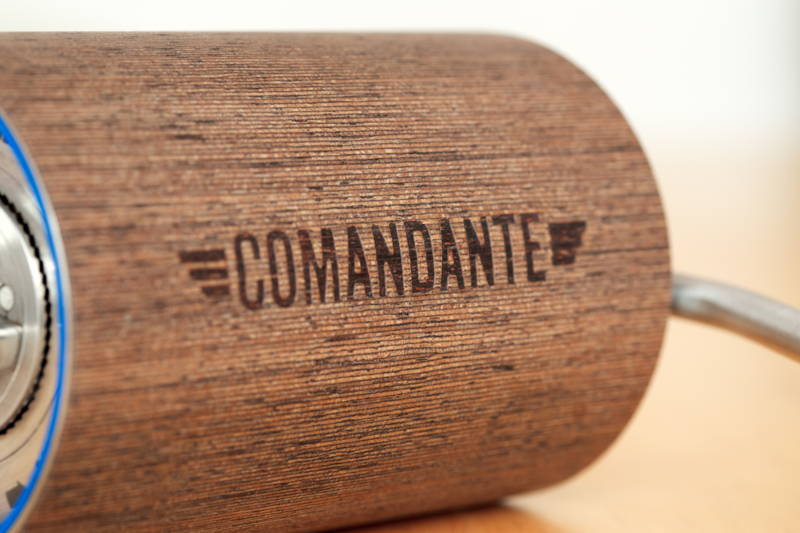
Where does this significant difference come from?
The grinder works with a cone grinder made of high nitrogen stainless steel, which is manufactured in a patented process. This stainless steel is not only extremely durable but also very sharp. The edges are even re-sharpened extra individually. Therefore, the Comandante even achieves a more homogeneous grinding result than most electric coffee grinders.
In addition, the hand grinder has two axes that stabilize the central, elongated bar (the so-called shaft). This attachment ensures that the inner part of the grinder does not move and no coarser coffee particles get into the grind container. This efficient design is now copied by other manufacturers, such as the Zassenhaus Quito. Nevertheless, we were surprised that most of the tested grinders still only have one axle.
Approximately 35 grinding degrees can be easily adjusted via a small wheel on the underside of the grinder. Thus, the hand mill offers a lot of space for any preparation method. Of course, it cannot keep up with the multitude of espresso grinds of infinitely variable espresso grinders, but that is not what a hand mill is made for. Even though you are more limited when fine-tuning the espresso, we can absolutely recommend it for espresso thanks to its otherwise excellent properties.
The difference in quality of the Comandante is also noticeable when operating the grinder. A double ball bearing supports the power transmission and reduces your own effort. Even the otherwise rather annoying grinding process starts to be fun. The beans are ground almost twice as fast as in the rest of the test mills, and the rotary motion works much easier and more rounded. This is also due to the shape of the handle, which is curved towards the center of the grinder, unlike the other hand grinders. As a result, the lid of the bean container sits particularly firmly during the grinding process, the transmission of power is supported and the grinder sits better in the hand.
The appearance of the Comandante is rounded off not only by a beautiful design, but also by exclusively high-quality materials. From the first touch of the hand grinder, it is immediately clear that you have a professional grinder in your hand. No trace of plastic.
The grinder looks very well thought out from front to back. The capacity of 40g of coffee is sufficient for any maker, but a second sealable jar is included in case you want to grind for stock. To clean the grinder, you can very easily remove the grinder completely. Only the detailed cleaning of the bean hopper can prove to be a bit more complex, since there are two axes and not all places are easily accessible. However, this minimal extra effort is only worth mentioning because we did not notice any other negative point.
Except for the price. If it weren’t for that, we’d all be proud to have our Comandante at home. For just over 200 euros, the hand grinder is by far the most expensive on the German market. But also by far the best.
Conclusion: The Comandante is certainly not a purchase for everyone, but a very high quality produced grinder that makes the grinding process enjoyable and provides a high quality grinding result.
Price-performance winner: Porlex Mini
In this rating, the Porlex Mini won slightly ahead of the Hario Mini Mill. It offers an amazingly homogeneous grinding result for its price class. durchgesetzt. Sie bietet ein erstaunlich homogenes Mahlergebnis für ihre Preisklasse.
Even at coarser grinds, the proportion of large coffee pieces in the grind is relatively low, as the axle of the grinding cone is stabilized by a spring. What is evident on one side of the spectrum is also visible in the fine dust. The grinder from the Japanese manufacturer produces very few microparticles. Even the „healthy“ amount of fines for espresso preparation, which is also pronounced in the Comandante, is missing. However, this proportion is not necessary for all other preparers. Overall, the Porlex comes in second place with its grinding result, which is even slightly better than the Zassenhaus Quito, but with its 13 grinds it offers significantly less flexibility than the grinder from the German manufacturer.
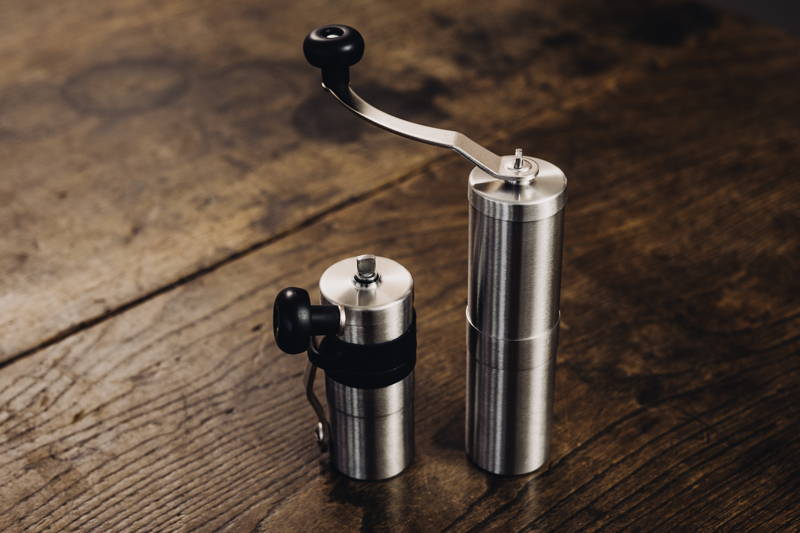

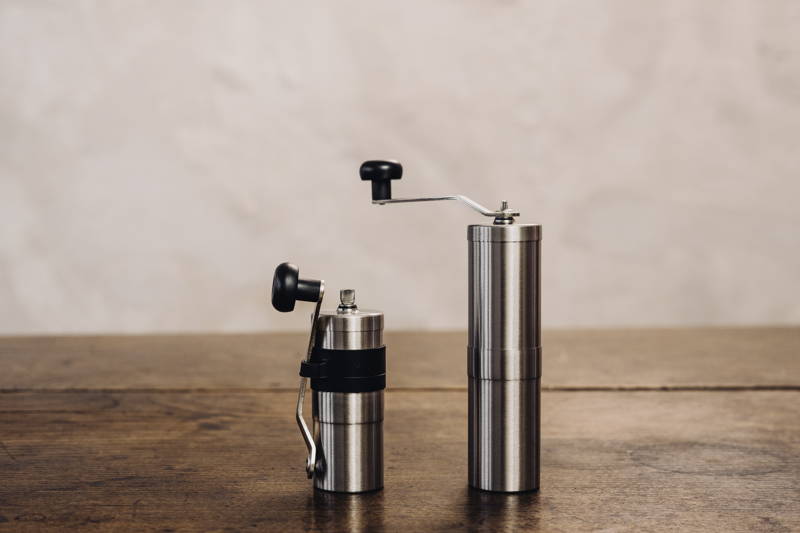
The grind can be easily adjusted via a cross-shaped screw. The principle is the same as with the Comandante: each click adjusts the grind. When adjusting, you should make sure to turn the grinder upside down, otherwise coarser coffee particles can get wedged in the grinder and damage it.
When grinding, the grinder feels very good in the hand and is comfortable to operate
The crank holder is slot shaped, which ensures that it fits very tightly. The older version of the Porlex had a hexagonal holder here, which became round after wear and could no longer be operated. The rubber ring provides even more comfort, as it makes the grinder much easier to grip. Unfortunately, it is not present in the Porlex Tall, which has 10 g more capacity, but loses in operation. The large version of the Porlex is somewhat impractical, especially for small hands. With it, you permanently have the feeling that the grind container is not properly attached and you have to hold it with the rest of the grinder. This is less of a problem with large hands, but extremely so with small hands. In addition, the Mini is perfect for traveling thanks to its size.
The Porlex also lives up to its consistently good test result in terms of quality. It works with a high-quality ceramic cone grinder and is made entirely of stainless steel. The handle is slightly curved to enable even better power transmission.
Are there any disadvantages?
However, when you consider these in relation to the price, they almost completely lose their significance. As already mentioned, the grinder’s range is relatively limited with just 13 grinds. Therefore, the Porlex offers more flexibility than many more expensive grinders, despite its low price. Especially since it coarse grinds can be used quite well here in contrast to many other representatives. As another small disadvantage, we see the small filling quantity of 20g. However, this is also sufficient for most preparers and a second grinding process is also not a major additional effort.
Conclusion: The Porlex Mini delivers a good grinding result, is very solidly built, and is easy to operate. It is one of the best grinders in the test, although it is relatively inexpensive. It’s the best choice for anyone who fancies good coffee but is looking for an inexpensive grinder. Due to its small size, it is also perfect as a travel grinder.
Where does the overall result come from?
We particularly focused on the quality of the ground coffee. In order to assess this quality, we tested the homogeneity and the fine dust for each grinder at the medium grind for filter coffee in detail. The number and gradation of the grind settings are also included in this rating, which accounts for 50% of the overall result. This is where we assessed whether the grinder delivers a good grinding result while offering enough range for different brewers or coffee types.
The overall result finishes with the operation (30%) and workmanship (20%) of the grinders. Here, the operation is easily in the foreground, since a hard-to-operate hand mill would disturb you every day during the grinding process. For these criteria, we took a closer look at the handling, grind setting, cleaning, material or known problems of the individual grinders, among other things.
Our price-performance rating is simple mathematics and is calculated from the overall result and the price of the grinder.
We tested the homogeneity of the grind with the Keck Sand Shaker
Different sized sieves allow the coffee particles to be separated from each other and you can measure how even the grinding result of the respective grinder is. To determine the size of the individual sieves, we ground and tested coffee for the hand filter with our Mahlkönig Guatemala. To do this, we shook 10g of coffee in the Keck Sand Shaker until no more coffee particles fell to the bottom of the shaker (about 3 – 5 minutes). When selecting the sieve sizes, it was important to us that hardly any coffee particles collected on the two outer sieves.
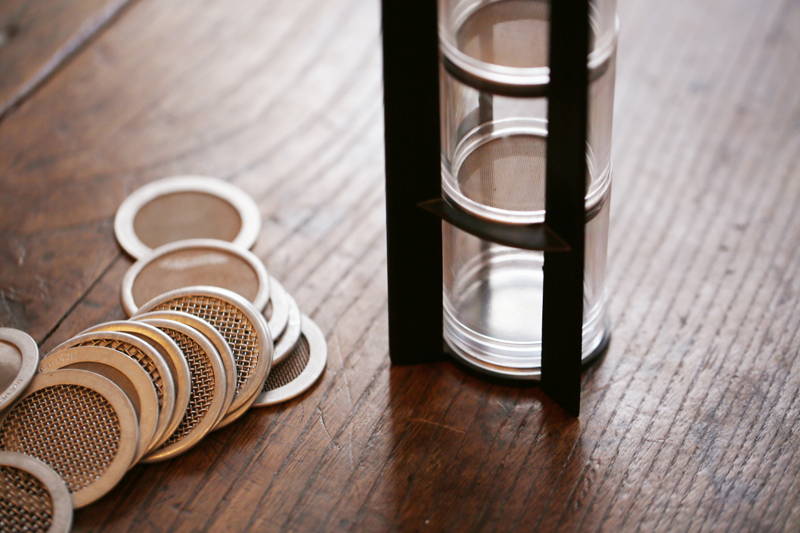
Less expensive alternative: Zassenhaus Quito
If the Comandante is too expensive for you and you are looking for a very good but affordable alternative, then the Zassenhaus Quito is the right choice for you.
The apple does not fall far from the tree. The Quito is modeled after our test winner in many aspects.This also illustrates the achievement of the Comandante as a pioneer of hand grinders. You can think about such imitations whatever you like, but only one thing was important for the result of the Quito: it is a good imitation. Not a Rixow.
Even the Quito cannot keep up with the grinding result of the Comandante, but it achieves a similar homogeneity as the Guatemala and the Porlex. However, the difference in class between the Comandante and the Guatemala, which in principle have no coarse coffee particles, becomes apparent in the proportion of coarse coffee particles. Here, the Porlex is also slightly stronger than the Quito, which is surprising at first, since the grinder of the Zassenhaus grinder is fixed by a double axle bearing, similar to the Comandante. Nevertheless, the grinder does not sit quite as firmly. Otherwise the proportion of coarser particles would not be so large. In terms of other distribution, the two grinders are similar. The second peak in the area of finer particles is not quite as pronounced in the Quito as in the original, and no noticeable difference is noticed in the fine dust.
Overall, the Quito performs slightly worse than the Porlex in this rating. However, since it has twice as many grinding levels and thus offers significantly more scope for all preparation methods, it is ahead of the Porlex in the overall assessment.
The grinder from the German manufacturer can be set to approx. 25 grinds using the same system as the test winner. The grinder itself also looks very similar, but if you hold both grinders in your hand, you will notice the difference. The grinder of the Quito is not quite as heavy and not quite as sharp and therefore cannot quite keep up with the patented stainless steel of the Comandante. Nevertheless, the criticism is limited: the manufacturer even gives a 25-year warranty on the grinder.
The grinding process has proven to be extremely user-friendly
.
Like our favorite, the grinder works with a double ball bearing, which makes grinding much easier. As a result, the Zassenhaus achieves a similar grinding speed as the Comandante and feels similarly good in the hand. This is definitely one of the biggest advantages, as the grinding process is much more pleasant than with the competition. The only difference: the crank is not as shaped as on the Comandante, where the power transmission works a bit better. In addition, the lid of the bean hopper comes off relatively quickly during fast grinding, so you sometimes have to hold it with your fingers. Since the grinder is nevertheless much more comfortable than the rest, we can forgive it this small flaw.
In addition, the hand grinder is of high quality. It consists largely of stainless steel and has a screw jar as a container for the ground coffee. Unfortunately, this screw jar is not supplied with an extra cap, otherwise you could also store the ground coffee. In addition, the lid of the bean container and the double axle bearing are both made of plastic. But these points are also similar in other representatives in the price range.
What’s to criticize about the grinder?
Apart from the already mentioned details that could still be rounded off in workmanship and handling, not much. Or rather nothing. Except perhaps the glowing stainless steel robe. You get the feeling that the Quito would shine even in the dark. We would prefer normal brushed stainless steel. But that’s fortunately a matter of taste.
Conclusion: The Zassenhaus Quito cannot keep up with the original, but it does not have to. It offers a good grinding result and a lot of flexibility through many grinding levels. It also has a high grinding speed, is comfortable during the grinding process and is well made. The good but affordable alternative to the Comandante..
More grinders in test
Rixow
At first glance, the Rixow looks like a spitting image of the Porlex. And that for 30€ less! You shouldn’t think twice about that, should you? Oh you should, because the low price is also the only „advantage“ of the grinder.
inspection. All „less important“ parts are made of plastic. Like the handle, the axle and the knurled screw of the grinder. Unfortunately, the grinder is also not quite as tightly attached as the Porlex. In addition, the screw is shaped differently and is not as easy to adjust. Furthermore, the grinder does not „click“ as evenly as on the Porlex when adjusting the grind, which is why the user does not always know whether the grind has been adjusted or not.
However, the most significant reason against the Rixow is its grinding result. In our grind review, you can see that the grinder grinds significantly differently than the Porlex. It produces the most fine dust and coarse particles at the same time. In other words, the grinding result is the exact opposite of homogeneous. And this is despite the fact that the grinder looks almost identical.
The grinding process itself also takes about ⅓ of the time longer with the Rixow than with the Porlex. Since the Porlex is also not the fastest grinder, grinding here can already become a real effort. Finally, we also noticed that the holder of the crank is a hexagon. So it’s the same as the bracket on the old Porlex. The new Porlex has a square bracket. Why is this important? The hexagonal holders become worn and round after some time. Then the handle can’t be operated and you can throw the grinder away. So you should think twice about just buying the Porlex right away.
Hario Mini Slim Plus
In the price-performance rating, the Mini Mill was only narrowly beaten by the Porlex. It is the cheapest and smallest grinder from the Japanese manufacturer. Although it is mainly made of plastic, apart from the ceramic grinder, it looks classically chic and feels good in the hand. In our opinion, it is better made than the Rixow despite the cheap material because it is much more stable and thus more suitable for long-term use.
If you really want to get a cheap grinder: cheaper than the Hario Mini you will find nothing comparable good.
The grinding result is already much better than that of the Rixow. The Hario grinder produces significantly less fine dust and lets only half as many coarser particles into the grinding material container. Even though the grinder is not really tightly attached, the size distribution of the coffee particles speaks for itself.
15 grinding degrees can be set easily and the grinding process works smoothly. Unfortunately, grinding with the Mini takes a relatively long time, but you pay relatively little for it. Overall, the Hario Mini can be recommended as an inexpensive entry-level or travel grinder, but you should not have the highest expectations. Anyone who usually grinds more than 20g of coffee should rather opt for a larger grinder that grinds faster. Otherwise, the grinding process can become a real hassle.
Hario Skerton Plus
The Skerton is the „big brother“ of the Mini Mill, but also has some similarities with the Canister. It could be described as a hybrid of the two grinders.
It costs just a little more than the Mini Mill, but it looks higher quality and more robust. It is also mostly made of plastic, but the collection container is made of glass. The Skerton feels good in the hand and grinds much faster than the Mini Mill. It’s easy to use in the hand, but it also has a non-slip rubber attachment for the glass base if you prefer to place it on the table for grinding.
Unfortunately, a very similar grinder was installed in the Skerton as in the Canister. The only difference is that there is a second axis bearing, so the grinder should be a bit more stable. Unfortunately, this is not reflected in the grind. The Skerton produces a fairly large proportion of coarse coffee particles. In addition, the particle distribution is not as homogeneous as in the other coffee grinders. What first looks extremely inhomogeneous in the graph because of the low climax is not that bad. In the Skerton, the mass of the coffee particles is distributed over 2 different sieves, but they are positioned next to each other. In other words, a high proportion of the particles is still in a narrow range. The large proportion of coarse particles, on the other hand, is negative. Overall, it can be said that the grinding result is worse than that of the Mini Mill. Too bad!
The Skerton is also not convincing when it comes to adjusting the approx. 12 grinding degrees. First, the upper screw has to be unscrewed and the handle removed for grinding so that the grinder adjustment wheel can be moved. This wheel is firmly fixed by putting on the handle and screwing it on. When turning the handle quickly, however, it can happen that the top screw loosens and with it the crank. Not really favorable.
Overall, the Skerton can only beat the Mini Mill in terms of workmanship and grinding speed; both have their strengths and weaknesses in terms of operation and grind quality. Thanks to its favorable price, the Skerton is also very good value for money, but can only be recommended as an inexpensive entry-level mill.
Hario Canister
Unfortunately, the Hario grinder in retro design is one of the losers in our test on a functional level. It impresses with its beautiful appearance and high-quality workmanship and is more of an enthusiast’s grinder for nostalgics.
If you take a closer look at the ground coffee, you will first notice an amazing peak in the distribution of the coffee particles. However, this is heavily clouded by the two extremes: The Canister unfortunately leaves a lot of coarse particles unground and produces a bit more fine dust than the competition. We cannot speak of real homogeneity here. This is due to the fact that the grinder is relatively loose. A double axle bearing would be useful here.
The Canister is also not really convincing in terms of operation. The grind setting works exactly like the Skerton and offers relatively little range with 5 settings. In addition, you have to put it between your legs or on the table to crank it. We have found the other hand grinders more comfortable during the grinding process. But the Canister grinds relatively quickly.
Another advantage is the large grinding material container, which can also be closed airtight with the help of a cork.
In summary, the Canister scores with its high-quality workmanship and nice looks, but it cannot deliver the best grinding result and is also not the most handy grinder in the test.
Hand grinders top sellers
